|
WWII Japanese Army 6 x 9.3 ° military binoculars w/ graticule, Fuji Shashin Kōki K.K.( 富士写真光機㈱ ) |

|
Japanese External Reverse Porro Prism Binoculars. WEBSITE MUSEUM |
|
OTHER BINOCULARS #12 & OPTICAL SIGHTS/ MOSTLY MILITARY |
|
My WWII Toko Japanese senior officers binoculars with original canvas case and with right ocular graticule/ ranging grid were made by Tokyo Kogaku Kikai Kabushikikaisha, founded in 1932 to make various Japanese army optical goods. Their successor company is now known as Topcon. |



|
The marking 航 means “navigation”and was used on Japanese navy and naval aviation binoculars. The marking ' 目盛入 means “with scale” (graticule or ranging grid). |
|
WWII Nikko Novar / Nippon Kōgaku Kōgyō Kabushikigaisha ( 日本光学工業株式会社 Japanese Army 7x50 military binoculars #42729 |
|
My WWII era Nikko Japanese senior officers military 7x50 binoculars serial number 42729, with right ocular graticule/ ranging grid were made by Nippon Kōgaku Kōgyō Kabushikigaisha ( 日本光学工業株式会社 " Japan Optical Industries Co., Ltd."), and their successor company is today known as Nikon. |
|
The marking 日本光学 means “Nippon Kogaku”. The marking 目盛入 means “with scale” (graticule or ranging grid), and the marking 丿 バ一 is the Kanji phonetic equivalent of “Novar” |




|
WWII Nikko / Nippon Kōgaku Kōgyō Kabushikigaisha ( 日本光学工業株式会社 Japanese Army NCO/ Non Commissioned officers 93 式双眼鏡 / 93-Shiki sōgankyō) Type 93 4x10 military binoculars |
|
In the same way that the German military developed the 08 fernglas in WWI as durable and economic and simple to make Galilean/ non prismatic binoculars to be issued to non commissioned officers in WWI, the Japanese also developed the Type 93 (93 式双眼鏡 / 93-Shiki sōgankyō) Galilean/ non prismatic binoculars to be issued to non commissioned officers during their 1930’s Manchurian conflict. It has a right side ranging grid. As with the Nikko binoculars above, and by the distinct logo outline, my example with it’s canvas carry case was made by Nippon Kōgaku Kōgyō Kabushikigaisha( 日本光学工業株式会社 " Japan Optical Industries Co., Ltd."), and is branded as Nikko binoculars. (the company is today known as Nikon). The serial number has been scratched out. |
|
The J.E.S. mark Japan Engineering Standards #13554 |



|
My Japanese 6 x 9.3 ° (6x24 mm) Type 89 binoculars are Japanese army issued and have a right ocular graticule or ranging grid. The Mt. Fuji mark is that of Fuji Shashin Kōki K.K. ( 富士写真光機㈱ , which later became Fuji Film Co, and whose factories were involved in WWII producing optical glass and related products including aerial cameras and apparently Japanese army binoculars, which the Japanese army actively promoted from the 1930’s. (thanks to Andrey Berdnikov/ Андрей Бердников of the USSR for identification). |
|
WWII Japanese Army 6 x 9.3 ° military binoculars, with graticule Tokyo Dai Ichi Rikugun Zoheisho |

|
NIKKO logo |

|
My 6 x 9.3 ° Type 89 binoculars are Japanese army issued, and are of a typical Japanese military pattern, and have a right ocular graticule or ranging grid. The star circle mark is of the Tokyo Dai Ichi Rikugun Zoheisho ( 東京第一陸軍造兵廠 ) / Tokyo 1st Army Arsenal (thanks to Andreydrey Berdnikov/ Андрей Бердников of the USSR for identification). These would be very typical of a US soldier bring back item, and virtually all Japanese binoculars encountered by U.S. soldiers were brought home. |
|
The J.E.S. mark is Japan Engineering Standards #13554 |
|
WWII Japanese Army Takatiho/ Takachiho Kōgaku Kōgyō K.K . 7x50mm military binoculars ser. #3063 |





|
My WWII Takatiho 7x50mm binoculars Serial #3063 were a brand of Takachiho Kōgaku Kōgyō K.K./ ( 高千穂光学工業㈱ / Takachiho Optical Industries Co., Ltd. , and are marked on the left side 目盛入 ( with scale/ reticule/ range grid) and I believe they have a 空 in circle marking indicating Army or Air Force use. The pivot has the marking of the Naval Chief Inspector, Tokyo Arsenal, and has the marking of the Toyokawa naval Arsenal/ Toyokawa kaigun kōshō/ 豊川海軍工廠 . (thanks to Andrey Berdnikov/ Андрей Бердников of the USSR for arsenal mark identifications). Translation help for kanji case marking to: miniature.binoculars@ gmail.com.). |



|
WWII Nippon Kōgaku Kōgyō Kabushikigaisha ( 日本光学工業株式会社 ) Novar 日本光学 丿 バ一 Japanese Army 7x50 military binoculars #59568 |

|
My WWII era Nikko Japanese senior officers military 7x50 binoculars serial number 59568, with right ocular graticule/ ranging grid were made by Nippon Kōgaku Kōgyō Kabushikigaisha ( 日本光学工業株式会社 " Japan Optical Industries Co., Ltd."), with the successor company today known as Nikon. They came with their canvas case. The marking 日本光学 means “Nippon Kogaku”. The marking 目盛入 means “with scale” which is the graticule or ranging grid, and the marking 丿 バ一 is the Kanji phonetic equivalent of “Novar” |



|
WWII Chiyoda Kōgaku Seikō KK/ 千代田光 Japanese Navy 7x 7 ° 10 ′ military binoculars w/ graticule |
|
My WWII Chiyoda Kōgaku Seikō Kōgyō Kabushikigaisha / 千代田光学精工㈱ . 7x7 ° 10 ′ binoculars serial #2935 have the Japanese naval property marking 航 in circle, and the marking indicating “with scale” 目盛入 on the left plate, and the marking indicating “with rule/ divider “ 規 on the right plate. (co. became Minolta Kōgyō in 1962) . |







|
WWII Japanese Army 6 x 9.3 ° Type 89 military binoculars, unidentified maker, serial #9760 |
|
My 6 x 9.3 ° Type 89 binoculars are Japanese army issued, of a typical Japanese military pattern, without reticule, with maker logo I am unfamiliar with. |






|
My WWII Toko 6x9.3 ° Japanese were made by Tokyo Kogaku Kikai Kabushikikaisha , founded in 1932 to make various Japanese army optical goods. The successor company is now known as Topcon. |
|
The J.E.S. mark is Japan Engineering Standards 13554 |

|
The right ocular ring has this engraved mark. If you can identify it contact us: miniature.binoculars@gmail.com |
|
誰 もがこのロゴを認識している場合は、私に連絡してください: If anyone recognizes this logo contact me at: miniature.binoculars@gmail.com |
|
The case was marked to Bailey Bridges of Canyon City Colorado, who was probably Army Air Corps Sgt. John Bailey Bridges of Canyon City Co. who served in Japan in 1945, and returned to Canyon City. |

|
NON MINIATURE BINOCULARS & OPTICS: MOSTLY MILITARY |
|
I.K.K./ Inoue K.K. WWII Japanese Army 6 x 9.3 ° binoculars |

|
My WWII era I.K.K. marked IJA/ Imperial Japanese Army 6 x 9.3 Type 89 binoculars with right ocular graticule/ ranging grid. I believe I.K.K. to be Inoue Kogaku Kogyo (and a Japanese enthusiast agrees). I have seen other I.K.K. marked WWII 6x9.3 binoculars, and 1952 dated “I.K.K. Tokio” logo plus “Orient” logo 8x25 civilian binoculars, and in 1959 binocular maker Inoue Optical Co. Ltd. had offices at 2-658 Hiratsuka, Shinagawa, Tokyo and a factory at 13 Naga-machi, Itabashi-ku Tokyo. The binoculars strap and case are kanji marked: 漢字翻訳 お願いします (kanji translation help please... miniature.binoculars@gmail.com). |
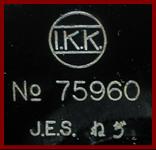

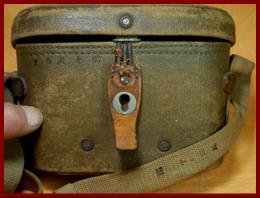

|
J.E.S. mark is Japan Engineering Standards # 13554 |
|
IKK 第 2 次世界大戦 の日本軍用双眼鏡 |

|
Two WWII E.K. /Enomoto Kogaku Seiki K.K. 榎本光学精機製作 WWII Imperial Japanese Army 6 x, 9.3 ° Type 89 binoculars, serial numbers 63849 and 88929, with right ocular graticule |
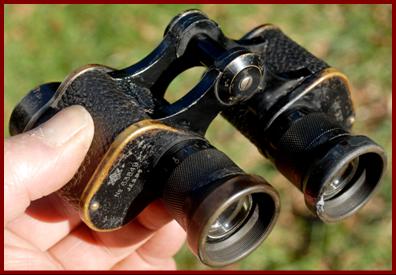
|
My two WWII era E.K. made IJA/ Imperial Japanese Army 6 x, 9.3 ° binoculars serial numbers 63849 and 88929 are typical of an approved Japanese military pattern, and have a right ocular graticule/ ranging grid. These type binoculars are normally thought of as infantry & mobile artillery officers equipment. E.K. is the abbreviation for Enomoto Kogaku Seiki K.K .(Enomoto Optical Instruments Works/ 榎本光学精機製作 所 ) , which was a Japanese optics assembling manufacturer founded in 1934. They produced quantities of WWII Japanese military and ordinance optics. “ Fuji Shashin Kōki K.K. ( 富士写真光機㈱ , meaning "Fuji Photo Optical Co., Ltd.") was founded in 1944, from the assets of Enomoto Kōgaku Seiki Seisakusho ( 榎本光学精機製作所 ), but this was absorbed back into Fuji Shashin Film ( 富士写真 フィルム㈱ ) after 1945.” (quote credit Wikepedia). Enomoto contributed the Meibo name that Fuji Photo Optical subsequently used on some of their post war civilian binoculars. |
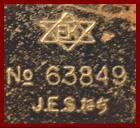
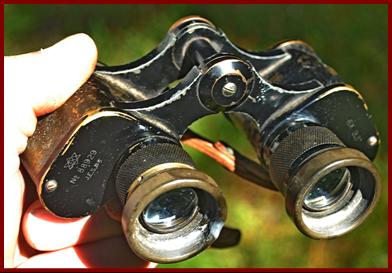
|
J.E.S. mark is Japan Engineering Standards # 13554 |



|
J.E.S. mark is Japan Engineering Standards # 13554 |
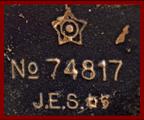
|
Tokyo Arsenal mark |
|
Toyokawa naval Arsenal mark |

|
FOR LIST OF JAPANESE WWII BINOCULAR MARKINGS SEE BOTTOM OF THIS PAGE |
|
WWII 吳 廠 Japanese Navy Kure Arsenal ? 7x 50 military binoculars w/ graticule serial #637 |
|
My WWII 7x50 Japanese binoculars with very low serial number #637 have the Japanese naval property marking 航 in circle, and the marking indicating “with scale” 目盛入 on the left plate. My own research indicates the 吳 廠 marking indicates either procurement by, or production at the Kure Naval Arsenal ( 呉海軍工廠 , Kure Kaigun Kosho, and this fits in with the presence of other Naval arsenal markings and arsenal inspection or approval markings on other WWII Japanese binoculars. |



|
WWII Japanese Army Kaikosha K.T. 6x24 Type 89 Military Binoculars serial #29123 |
|
My WWII Japanese army 6x24 officers binoculars are interesting. The Kaikosha marking on these binoculars (or in Japanese 偕行社 , or Kaikōsha) , is the literal wording in English for “Officers Club”, and this was an organization founded on 15 February 1877 in Kudan Tokyo (the K.T. marking on the binoculars) as a meeting place for officers and as a reception hall. This was not long after the founding of the Imperial Japanese Army. The Kaikosha name means “let’s go together” or “we shall fight this war side by side”, and is derived from a Chinese poem. Other Kaikosha groups cropped up at divisional headquarters across the country, and Kaikosha was soon incorporated for providing aid to wounded soldiers, supporting temples that consecrated war dead, publishing academic research and essays on military topics, and fostering friendships among fellow officers, similar to the way service membership and mutual aid organizations in other countries operate. But since Kaikosha was for officers only and since prior to WWII Japanese officers normally purchased their own clothing and kit (as did British officers), Kaikosha then commenced the manufacture or contract manufacture and sale of military related hard goods and military equipment, especially clothing, for officers. By World War II, Kaikosha stores sold every variety of officers uniform, as well as military caps, gloves, boots, swords, pistols, holsters, binoculars including mine , and memorabilia from military exercises and parades, and other goods. All these Kaikosha-made or distributed goods were widely used by military officers. |
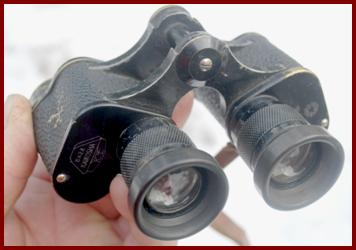
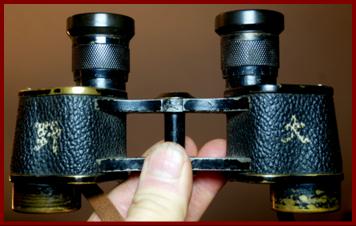
|
Can a viewer read the Japanese name? It would be astonishing if it was 大野 ( my name). c ontact: Miniature.binoculars@ gmail.com |

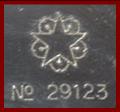
|
Patriotic logos such as the mum on these binoculars, or other traditional symbols of Japan like cherry blossoms were common markings on Kaikosha made goods. The organization also ran schools, inns, and cafes for use by officers and their families. ( credit /thanks to Wikipedia for some of this information) |

|
Believed WWII Japanese Army Mori Kawa Katori 6x9.5 °Type 89 Military Binoculars serial #2886 |
|
WWII Japanese Army unknown maker 7x50 Military Binoculars serial #594 |
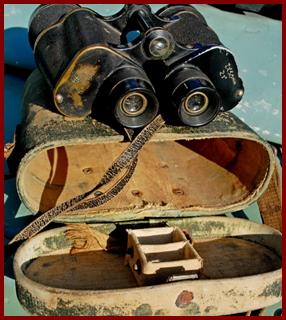
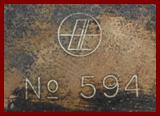
|
If any website viewer knows this manufacturer logo please contact me. c ontact: Miniature.binoculars@ gmail.com このメーカーのロゴを知っているウェブサイトの閲覧者がいる場合は、私に連絡してください。接触 : Miniature.binoculars@ gmail.com |
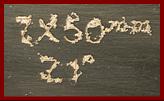
|
My WWII Japanese 7x50 binoculars and somewhat unusual pattern canvas case are of an unknown maker/ unknown logo and not one I have seen before. Their low serial number of 594 does suggest relatively small production run (speculative). These do not have a graticule/ ranging grid. |
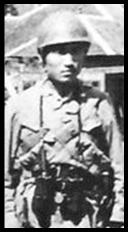
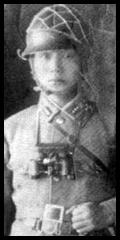





|
I don’t currently have any information on the maker of my Japanese Mori Kawa Katori 6x9.5 ° binoculars serial #2886, which I believe to be WWII binoculars |
![Text Box: CLICK ON PAGE LINE. CLIQUEZ SUR LA LIGNE DE PAGE. KLICKEN SIE AUF SEITENZEILE. HAGA CLIC EN LÍNEA DE PÁGINA..[ページ行]をクリックします。НАЖМИТЕ НА СТРОКУ СТРАНИЦЫ. ALSO SEE INDEX.](image3473.gif)
|
TWO WWII Japanese Army Zuiho 6x24 Type 89 Military? Binoculars serial #5866 and serial # 26220 |
|
I believe that the company making my two Zuiho type 89 binoculars in the 1940’s was Zuihō Sokuryō Kiki K.K. ( 瑞宝測量機器㈱ ) ( Zuihō Measuring instruments Co. Ltd.), based in Tokyo. I have seen Zuiho optical measuring instruments like sextants and surveying transits. I believe later in the early 1950's the company was operating as Zuihō Kōgaku Seiki K.K, Zuihio Optical Co Ltd. and by 1959 as Zuiho Optical instrument Co Ltd. Over the years the company made or distributed cameras, lenses, transits, levels, microscopes, sextants, and binoculars, and this collection has a variety of Zuiho miniature pattern brand binoculars ,and some full size models made in the 1960’s and 1970’s. The company CEO was head of of the Japan Binoculars Export Promotion Association in the 1950’s. |
|
WWII Japanese Army Manchu Kogaku , Manchurian Optical Co Ltd. 満州光学製制六 6 x9. 3 ° (6x 24mm ) Type 89 Military Binoculars serial #4238. |
|
My 満州光学製制六 Manchu Kogaku / Manchurian Optical Company Ltd. binoculars with their canvas military case were made by a Chinese factory that was an affiliate of Nippon Kōgaku Kōgyō Kabushikigaisha, and which had been formed by Lapan in Mukden China in 1938 to make Japanese military binoculars. ( info credit Okashi Garden) |
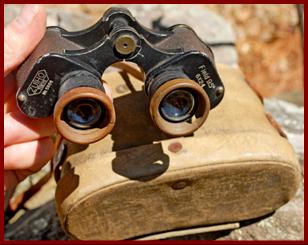


|
THANKS TO RON GERLACH FOR ASSISTANCE IN ACQUIRING ABOVE WWII? ZUIHO BINOCULARS #5866. |
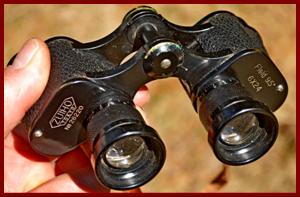



|
There are some difficulties determining what are military use and non military use Japanese binoculars made to a similar pattern. The Japanese military issued type 89 binoculars they contract purchased to issue to squads, platoons, companies, and for artillery, spotting, and naval use. But Japanese officers also purchased binoculars (private purchase). Strong indicators of issued binoculars are Japanese language markings, approval markings, JES markings, filters, ocular covers, canvas web cases, canvas neck straps, and canvas ocular covers, and power x angle marking style. (6x9.3). |
|
More ambiguous are military pattern binoculars lacking any of the above, but those can still be Japanese military officer private purchase war use. Adding to the complexity, some military pattern binoculars were produced during the occupation, and were sold inside of Japan to U.S. occupation troops. |
|
WWII Toko/ 東京光学 / Tokyo Kogaku Kikai Kabushikikasha (Tokyo Optical Co Ltd) Japanese Army 6x9.3 ° military binoculars #82968. |
|
WWII Toko 東京光学 / Tokyo Kogaku Kikai Kabushikikaisha (Tokyo Optical Co) Japanese Navy 7x7.1 ° military binoculars w/ graticule. |
|
WWII Japanese Army Yashima 7x50 Military Binoculars serial #3719 |
|
My probably WWII Yashima 7x50 binoculars were made by Yashima Optical Co Ltd/ 八洲光学工業株式会社 ., which was founded Feb. 11 1935, as a spin off from Takachio Manufacturing Co Ltd. (now known as Olympus) and from May 1941 they produced military optics including binoculars. My 7x50 Yashima binoculars have a textured paint finish. They also produced 6x9.3 °to JES spec military binoculars. Yashima still uses the same logo and currently produces microscopes. Info credit: Yashima Optical Co. Ltd website under their Company History (translated). |

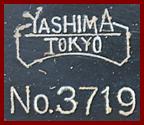


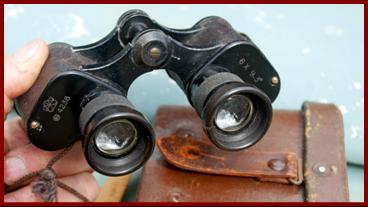
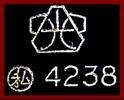
|
If any website viewer knows this manufacturer logo please contact me. c ontact: Miniature.binoculars@ gmail.com このメーカーのロゴを知っているウェブサイトの閲覧者がいる場合は、私に連絡してください。接触 : Miniature.binoculars@ gmail.com |
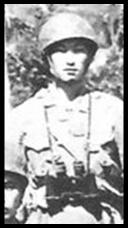
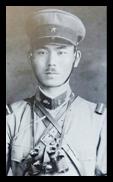
|
Same observed with serial numbers 26921,40309,52008,53048, 122263,151562 |
|
I have also observed these same type binoculars with serial numbers 7763, 8074, 11606, 25044, 100635, 105000 |
|
I have also observed these same type binoculars with serial number 67863 |
|
EK 7x7.1 °militay binoculas also made (serial number 174 observed). |
|
I have also observed these same type binoculars with serial numbers 2786, 139377. |
|
I have also observed these same type binoculars with serial numbers 46781, 50841,52993, 53673 |
|
The earlier pair have military associated case and eyepieces. But the use of the English word “Field” do raise a question of early post war production |
|
WWII Japanese Army Tokyo Moriko 6x9.3 °Type 89 Military Binoculars serial #95117 |
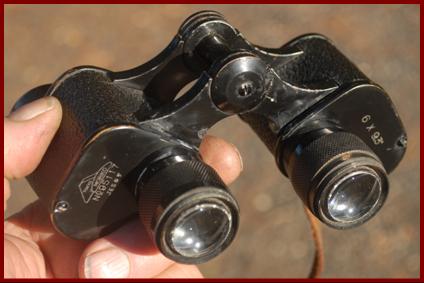



|
I have seen some Mori Kawa 6x9.5 ° binoculars with the military JES standard making (these do not have it). |
|
If any website viewer knows this manufacturer logo please contact me. c ontact: Miniature.binoculars@ gmail.com このメーカーのロゴを知っているウェブサイトの閲覧者がいる場合は、私に連絡してください。接触 : Miniature.binoculars@ gmail.com |
|
J.E.S. mark is Japan Engineering Standards # 13554 |
|
I don’t currently have any information on the maker of my Japanese Moriko 6x9.3 ° binoculars I have observed these binoculars with seial numbers 3529, 3734, 3803, 20692, 46335, and 95117. |